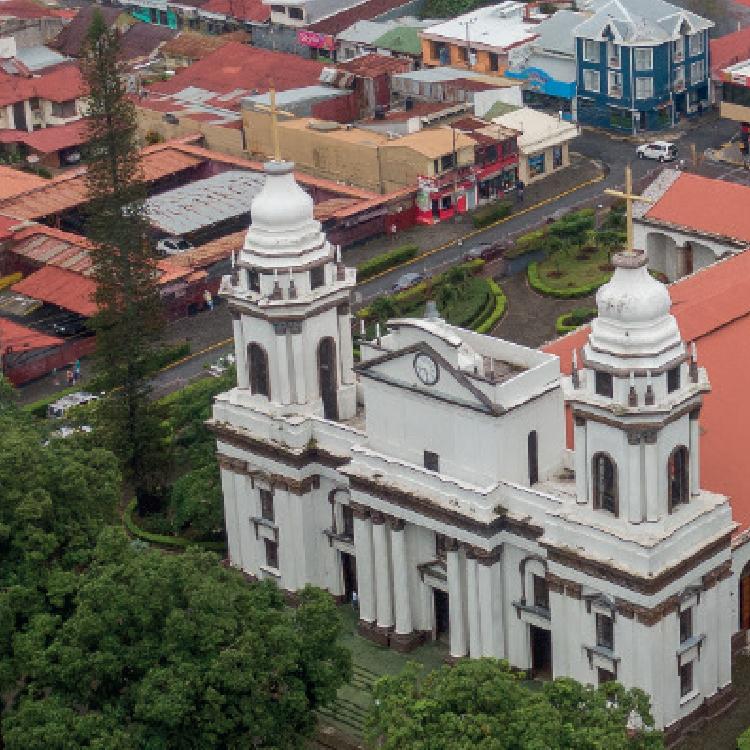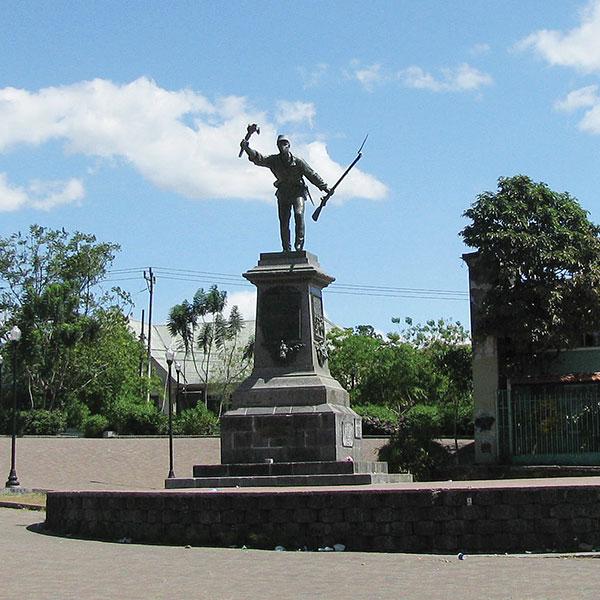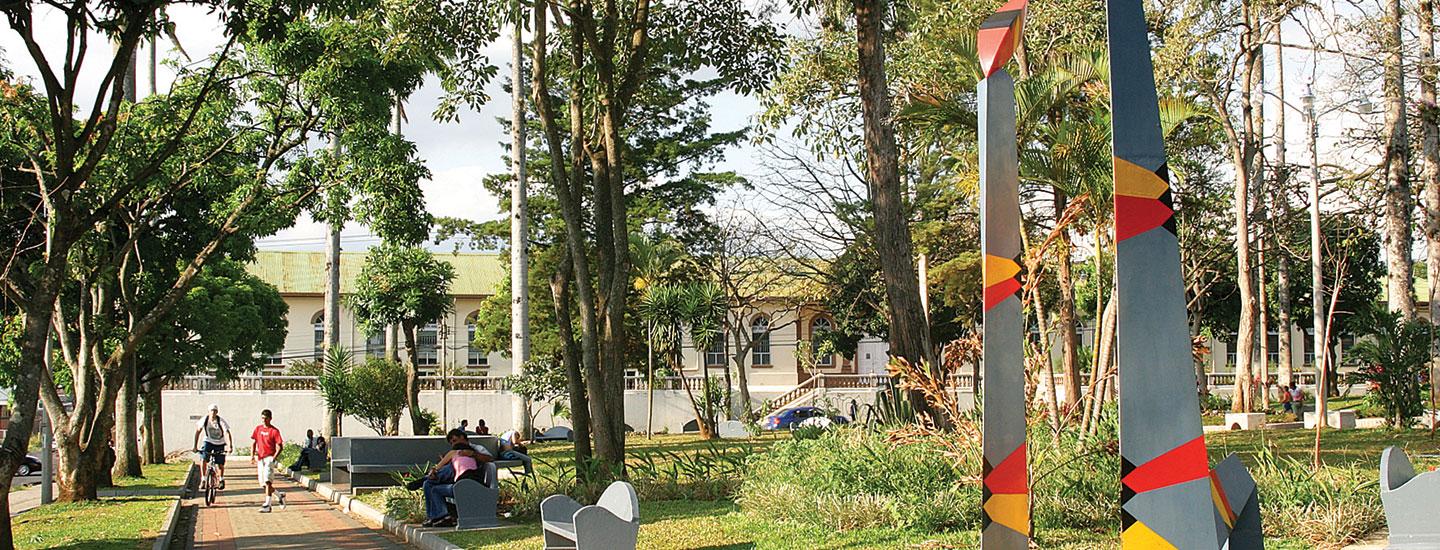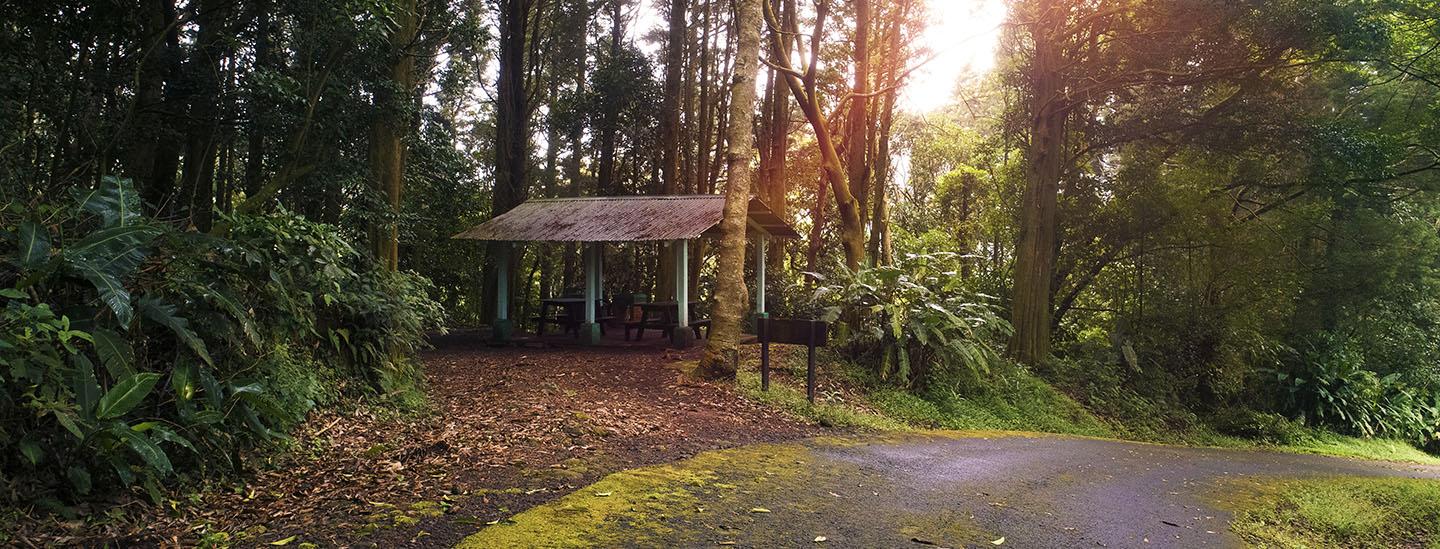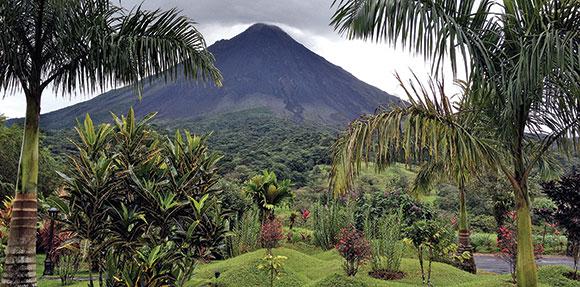historical walks through alajuela
Alajuela is the second largest province in Costa Rica and is located some 12 miles northeast of the capital along the General Cañas highway.
The city of Alajuela is also known as the “City of Mangos” because of its large number of mango trees, especially around Central Park.
The Alajuela canton has a population of about 297,879 people. Its diversity of production is the driving force behind the local and national economy.
The area around the Juan Santamaria International Airport, the main entry point to Costa Rica, is developing into a large district of exporting businesses. Many of these businesses are manufacturing industries that work within the free trade zones. Visitors will find many attractions to see, including the Juan Santamaria History Museum, the Alajuela Cultural Center and the Cathedral that was restored in 2010, whose interior displays dramatic works of art.
Its warm climate and friendly people, as well as many interesting points of interest that can be reached on foot makes the county of Alajuela a place definitely worth seeing.
Excursion l
The Juan Santamaria Plaza is the most important icon for the Alajuelan community and all Costa Ricans because it is home to the Juan Santamaria Historical National Monument. The bronze statue is flanked by two canons and is dedicated to the memory of Juan Santamaria. It was unveiled on September 15, 1891 and is dedicated to the memory of this hero who gave his life to save the country in the National Campaign against the Filibuster headed by William Walker.
He was declared a national hero after the end of the Battle of Rivas on April 11, 1856.
This historical event in which Costa Rica came out victorious is one of the proud moments of this peaceful Costa Rican town that was able to defend its freedom and its ideals of independence.
The Theater was built in 1956 and designed by the prominent national architect Jose Maria Barrantes. It is a shining example of the Art Deco and neo-colonial movement in Costa Rica.
The previous building, The Event Room of the Alajuela Institute, was used as a theater from the beginning of the 20th century. In 1911, the businessman Buenaventura Caseria brought in theater groups from San Jose and the rest of the country every Saturday, and, when possible theater groups from abroad. He showed comedies and dramas as well as operas and films.
It was declared a historical architectural heritage site by Executive Decree. Today, it is home to the Alajuela National Theater and is considered the third most important theater in the country after the National Theater and the Melico Salazar Theater in San Jose.
Tel.: (506) 2436-2362 or (506) 2436-2332
The provisions market in Alajuela was established with the founding of the city of Alajuela on October 12, 1782. It is located in the center of the city and measures some 25,149 sq. ft. and a total of 249 kiosks with multiple businesses including watch stores, butcheries, fish markets, mini-diners, clothing stores, shoe stores, etc. It is open from Monday to Saturday, 6 a.m. to 6 p.m.
The Municipal Market in Alajuela is in the process of being remodeled to rejuvenate business in Alajuela.
This block-long building is located where the old Alajuela Municipal Palace once was. It was declared a historical heritage site in 1979. It has two levels with a garden in the middle. It is home to the Municipal Archive, the Municipal Music Conservatory, the Sports Promotion Office, and the regional office of the Culture department in Alajuela.
Since October of 1996, it has been home to the Alajuela Cultural Center, which has played an important role in developing art and culture in Alajuela. There are many options provided thanks to the efforts of la Escuela Casa de Artista, the Alajuela Municipal Conservatory, the Chess School among others. The center is open to the public from Monday to Saturday.
Since 1890, this park has been one of the main meeting point in Alajuela and is considered an historical heritage site in “The City of Mangos.” The layout of the park shows a renaissance influence from the beginning of the 20th century, where the internal flow starts from the center and works outward.
The interior of the park is made up of green areas in geometric shapes with a beautiful fountain in the middle imported from Glasgow, Scotland.
The nucleus of this space is for social interaction, which is surrounded by buildings of great historical and architectural value. It is common to see artistic or cultural events in this area.
Excursion ll
Next to Alajuela Park is the Cathedral, which began as a public prayer building in 1782. Its construction was finished in 1863 and was declared as a cathedral in 1921.
Its neoclassical style and proximity to the park and downtown Alajuela give the area an elegant, but simple character, typical of the Alajuelan town. In the rear of the cathedral is the reddish dome, also designed in the neoclassical style.
Its interior has a simple and spacious decoration, with the exception of the dome, which has more ornamentation. Made up of three naves, the capitals are decorated with motifs from the local area.
This building makes up part of the historical center of the city and is considered an extremely valuable landmark. The presence of the Methodist congregation in Costa Rica dates back to 1917 and in 1928 the first Methodist church “El Mesias” was built in brick in the center of the city, which still stands as a traditional meeting point for the Methodist community.
This fortress was built between 1874 and 1877 by General Tomas Guardia and was remodeled in 1936 by then-president Leon Cortes Castro. Various Alajuelan military leaders that commanded the headquarters came to be president of the republic such as General Prospero Fernandez and General Bernardo Soto Alfaro.
By 1894 there were enough military weapons to arm 5,000 men. Some believe that the underground tunnels that connect the barracks with the general’s residence and the city hall are from the remodeling in 1936.
After the abolition of the military, it was converted into an education center and after that, it was the main office for the Research and Perfection in Technical Learning Center (CIPET in Spanish). It has been recently set up as the Juan Santamaria History and Culture Museum. It was declared a historical architectural point of interest, according to the Executive Decree published in the La Gaceta.
Construction on the historic San Rafael Hospital was completed in 1905. The eclectic baroque design of its southern facade is still almost completely intact and it was declared a historical architectural heritage site by Executive Decree on September 3, 1999, and published in La Gaceta.
The southern facade of the property joins the Palmares Park in historical-architectural harmony. For more than 100 years, this hospital center has served the needs of the Alajuelan community, making it an important institution within the historical development of the community. It is currently home to the Costa Rica Social Security offices.
The Ascencion Esquivel Ibarra School is another valuable national and tourism site. It is a concrete building dating back to 1936. It was designed and supervised by the architect Jose Maria Barrantes, one of the most renowned architects of public and private buildings in the middle of the 20th century. It is part of the historical center of Alajuela and plays an important role in the urban life of the city.
The Alejandro Morera Soto stadium is close to the historical center of Alajuela. It is home to the Liga Deportiva Alajuelense, one of the football clubs with the longest running traditions in Costa Rica and in Central America, founded on June 18, 1919.
With a collection of 27 national championships and 17 runner-up titles past football greats have passed through this club, including the best football player in the history of Costa Rica, the great magician of the soccer ball, Alejandro Morera Soto, the name given to the stadium in 1961.
The chapel was built at the end of the 19th century in 1889. The adobe wattle and daub construction system used build this temple is nowadays obsolete, making it one of the few religious buildings representing this style.
This property is the result of hardworking local management, which was able to acquire the land and finance it by means of social and recreational activities.
The combination of the former considerations is sufficient grounds to ensure its conservation and grant it historical and architectural heritage site status.
In order to promote culture and create a sense of belonging among Alajuelans to strengthen local identity, the City of Alajuela has created the “Public Art Displays” project which is a contest to select various works of art to be displayed throughout the downtown Alajuela and surrounding areas.
share your experience
#VisitCostaRica
No two trips to Costa Rica are the same. Share your beautiful moments with us and with everyone who connects with pura vida.
